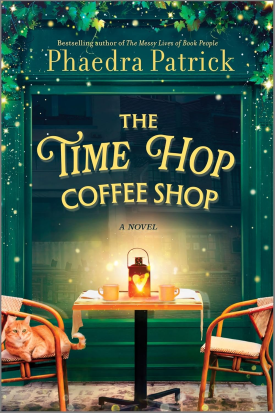Miss Marple Books In Order
Book links take you to Amazon. As an Amazon Associate I earn money from qualifying purchases.Publication Order of Miss Marple Books
| The Four Suspects | (1930) | Description / Buy at Amazon |
| The Companion | (1930) | Description / Buy at Amazon |
| The Affair at the Bungalow | (1930) | Description / Buy at Amazon |
| The Murder at the Vicarage | (1930) | Description / Buy at Amazon |
| The Body in the Library | (1942) | Description / Buy at Amazon |
| The Moving Finger | (1942) | Description / Buy at Amazon |
| A Murder is Announced | (1950) | Description / Buy at Amazon |
| They Do It With Mirrors / Murder With Mirrors | (1952) | Description / Buy at Amazon |
| A Pocket Full of Rye | (1953) | Description / Buy at Amazon |
| 4:50 From Paddington / What Mrs. McGillicuddy Saw! | (1957) | Description / Buy at Amazon |
| The Mirror Crack'd from Side to Side | (1962) | Description / Buy at Amazon |
| A Caribbean Mystery | (1964) | Description / Buy at Amazon |
| At Bertram's Hotel | (1965) | Description / Buy at Amazon |
| Nemesis | (1971) | Description / Buy at Amazon |
| Sleeping Murder | (1976) | Description / Buy at Amazon |
Publication Order of Miss Marple Collections
| The Thirteen Problems | (1932) | Description / Buy at Amazon |
| 13 Clues for Miss Marple | (1966) | Description / Buy at Amazon |
| Miss Marple's Final Cases | (1979) | Description / Buy at Amazon |
| Miss Marple: The Complete Short Stories | (1985) | Description / Buy at Amazon |
| Miss Marple Short Stories | (2005) | Description / Buy at Amazon |
The Miss Marple series is a collection of crime fiction and mystery novels written by the world-famous English author Agatha Christie. This series features the chief protagonist, a fictional character named Miss Marple. In addition to the novels, Miss Marple also appears in 20 short stories written by Agatha Christie. Christie has described Miss Marple as an elderly spinster living in the village of St. Mary Mead. Her real name is Jane Marple, but she is usually referred to by her popular moniker, Miss Marple.
Throughout the crime fiction series, Miss Marple acts as a consulting amateur detective. Alongside other famous characters created by Christie, Miss Marple is highly popular and has been portrayed on screen numerous times.
Miss Marple first appeared in a short story published in 1927 titled “The Tuesday Night Club.” Her first appearance in a full-length novel was in The Murder at the Vicarage in 1930. Miss Marple’s character is inspired by the step-grandmother and Aunt Margaret West of Agatha Christie, as well as by Christie’s cronies. However, Christie has attributed the inspiration for the character to various sources. According to Christie, Miss Marple is the type of old lady who might resemble the Ealing cronies of her step-grandmother, whom she encountered in numerous villages she visited as a child.
Some of the material used to create the character of Miss Marple was also drawn from other characters Christie had created, such as the spinster Caroline Sheppard. When a novel featuring Caroline Sheppard was adapted into a stage play by Michael Morton, he replaced Caroline Sheppard with a young girl. This change saddened Christie, prompting her to create the character of Miss Marple. However, there is no definitive source from which the name “Miss Marple” was derived. Some critics believe Christie adopted the name from the Marple railway station in Stockport, which she frequently passed. Others speculate that the name was taken from a family that lived near the home of Christie’s sister Madge at Marple Hall.
The depiction of Miss Marple changes somewhat in the later books of the series. Initially, Miss Marple is portrayed as a gossiping woman. While the townspeople liked her, they often found her tedious. As the series progresses, Marple is shown to be kinder and more modern. With her shrewd intelligence, she solves difficult crimes. Throughout her time in St. Mary Mead, Miss Marple encounters numerous incidents that reveal the darker aspects of human nature.
Miss Marple also has a knack for making casual comments that later relate to the cases she is working on. In many of the books, Miss Marple relies on her friendly relationship with Sir Henry Clithering, a retired Metropolitan Police commissioner, to obtain official information when needed.
Miss Marple remained unmarried throughout her life and had no close relatives. In some novels, she is depicted as having a nephew named Raymond West, a popular author with an artist wife named Joan. Raymond frequently underestimates his aunt’s mental abilities and overestimates his own.
Miss Marple is shown employing young women from an orphanage, training them to serve as housemaids after her long-time maid and housekeeper, Florence, retires. For a brief period, she is looked after by an irritating maid named Miss Knight.
Miss Marple never worries about her means of living, as she is financially supported by her nephew. She is portrayed as a highly educated woman, with knowledge of a few art courses, including human anatomical studies.
In one of the books in the series, Christie shows that Miss Marple grew up in a cathedral town and completed her schooling in Italy. Little is known about her background, except that she has a couple of sisters. Raymond’s mother is one of them, and the other is the mother of a murder suspect named Mabel Denham.
One of the early books written by Agatha Christie in the Miss Marple series is The Thirteen Problems, published in 1932 by Harper. The novel opens with the local people of St. Mary Mead frequently meeting at a club called The Tuesday Night Club to challenge Miss Marple with recent unsolved crimes. On one such evening, a group of people arrives at Miss Marple’s house and begins discussing unsolved crimes in the city. Some of these crimes include disappearing bloodstains, a thief committing the same crime twice, the invisible will case, the message written on a dying man’s deathbed, and the case of the spiritualist who informed the locals that the Blue Geranium could cause death. Miss Marple faces the tough challenge of solving these cases one by one to the best of her abilities, ensuring the peace of St. Mary Mead. Later in the novel, The Tuesday Night Club becomes a regular venue where people approach Miss Marple with their unsolvable cases, and she doesn’t hesitate to take them on, knowing she has the mental acuity to solve any criminal case.
Another early book in the Miss Marple series is titled Nemesis, published by Signet in 1971. In this novel, the main characters are Mr. Rafiel and Jane Marple. The story begins with Miss Marple being astonished to receive a letter from the recently deceased tycoon, Mr. Jason Rafiel, whom she had met on a vacation in the West Indies. In the letter, Mr. Rafiel, knowing he was near death after years of ill health, asks Miss Marple to investigate a case. However, he doesn’t reveal the details of what she needs to investigate, leaving Miss Marple to uncover clues over time. As she delves into the case, Miss Marple discovers that Mr. Rafiel wanted her to investigate the true circumstances behind a murder for which his son was blamed. Rafiel believed that Miss Marple, with her keen sense for uncovering evil, was the right person to exonerate his son and reveal the real culprit.
Book Series In Order » Characters »


 Any issues with the book list you are seeing? Or is there an author or series we don’t have? Let me know!
Any issues with the book list you are seeing? Or is there an author or series we don’t have? Let me know!
If I were to complain, the leading one would be that Miss Marple does not have enough novels! Try forty, as opposed to twelve. Another is Dame Agatha’s insistence on referring to the U.K. as England. In the Hercule Poirot short story, she goes so far as to refer to the English Prime Minister – whose surname is MacAdams, by the way – and to the English Army. WHAT WERE HER PUBLISHERS’ THINKING???
The “UK” was not a term in regular usage when the Miss Marple novels and stories were written. England was the term used at that time. The world and the English language, have change quite a lot since then. Not necessarily for the best, in this writer’s judgement.